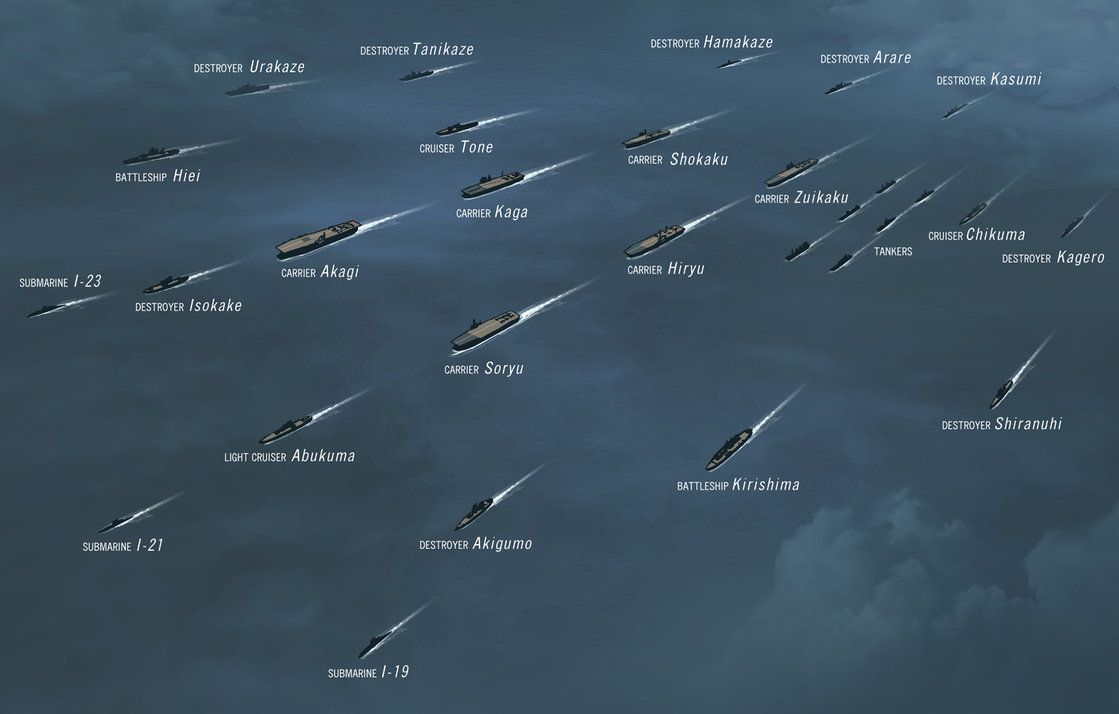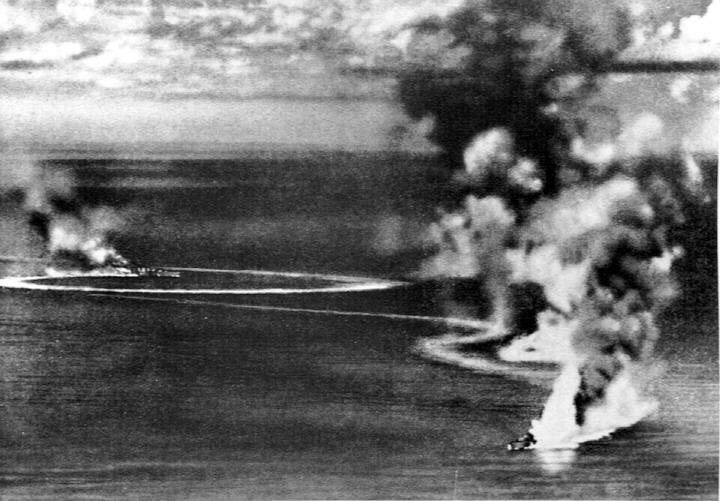Fall of Guam Introduction On 11th June of 1931., the Secretary of the Navy ordered Guam’s Governor to demilitarize the island. This move was in reaction to Japanese military activity in Manch…

historyandwarfare.wordpress.com
Fall of Guam
Introduction
On 11th June of 1931., the Secretary of the Navy ordered Guam’s Governor to demilitarize the island. This move was in reaction to Japanese military activity in Manchuria, seized later that year, hoping perhaps that demilitarization of Guam would confine any Japanese military moves to Manchuria and not provoke any incidents on Pacific islands. All guns and mounts, including the mobile artillery of the Marines, were dissasembled and returned to the United States on all transports that could take same. Only two 8-inch howitzer guns with mounts, eight 7-inch rifles and two 7-inch tractor-mounted guns were left on Guam, simply because transports could not load guns heavier than 6 inches. Ammunition was also left in the magazines.
Soon after Guam was demilitarized, US and Japan exchanged visits, with Captain Root visiting Saipan and Baron Matsuda visiting Guam. These visits were a show of friendship but also mutual assurance of military weakness. Japanese schooner Kibara Maru, based on Saipan, also made frequent visits to Guam. This was likely used to allow Japanese resident on Guam to inform the Japanese government on Guam affairs.
With big guns gone, Guam was left with two 6-pound guns for saluting, 12 Browning automatic rifles, four Browning machine guns, 688 Springfield rifles for Guam militia and 260 Springfield rifles for the Marine Corps and Insular Force.
Japanese goals
Guam’s capture by Japan was a minor operation within the campaign that stretched over 6 000 miles. Over a thousand aircraft were involved in operation which ended up reversing Pacific balance of power with very few losses. Air strikes were followed by landings and occupation of certain locations. This was enabled by the fact that by 1941., Japan possessed Mitsubishi A6M Zero-Sen, first carrier-borne fighter aircraft that could outperform land-based models. Zero had range of 1940 miles when using drop tanks, and typical combat radius exceeded 500 miles.
Guam was important because it could serve as an air base for Zeroes as well as land-based twin-engined bombers. Guam would also serve as a stop where aircraft en route between other islands could refuel. It would also serve as an alternative to Saipan, Tinian or Rota when they were closed due to weather or enemy action. Taking Guam would also deny to United States a waypoint en route to the
Philippines, themselves an important source of raw resources as well as a key route between Japan itself and the Japanese-held French Indochina. Oil and other raw resources Japan required lay in Southeast Asia, especially Netherlands East Indies and British Malaya.
In order to protect and keep open the 3 000 miles long sea route for tankers, enemy bases in the Philippines, Hong Kong and Singapore were to be captured first. Outer ring of protection would be formed by American Wake and Guam, British Gilberts and Burma and Australian Solomons. Elimination of US fleet at Pearl Harbor was also meant to keep this route safe.
Finally, Guam represented the largest and potentially richest island within the 900 mile radius. Nearby Saipan and Tinian were a significant source of raw resources for the Japanese, but Guam could be made to produce more.
Invasion of Guam
In December 1940., Japanese Imperial High Command ordered Army commands in China to begin studies for the capture of targets in Southeast Asia and the Pacific. Detailed plans for the amphibious invasion of Guam were completed in October 1941. Meanwhile, three Army divisions in China trained for tropical warfare and received tropical clothing and gear. From one of these divisions – the 144th Infantry Division – came a regimental combat team named South Seas Detachment. This team was further reinforced with naval militia and other units, and then assigned the tasks of taking first Guam, and then Rabaul on New Britain island in the Solomons.
Starting with October 1941., the 18th Air Unit of Imperial Japanese Navy flew high altitude photo reconnaissance flights over Guam from its base on Saipan. Secret maritime night patrols were also carried out from October on. Japan’s South Seas Detachment of 5 000 soldiers staged in the Bonin Islands and proceeded on 4th December 1941. towards Guam. En route near Rota it picked up ships which held 500 men of a special naval landing force drawn from the 5th Defense Force stationed off Saipan.
Guam invasion fleet, consisting of three cruisers, three destroyers and eight merchant ships serving as troop transports, organized off Rota on 8th December (7th in Hawaii). At the same time, planes of the 18th Air Unit at Saipan bombed and strafed Guam. On Guam, Japanese nationals were arrested and jailed as soon as the state of war with Japan became known.
Unopposed air raids on 8th and 9th December destroyed several houses and stores in Agana. Near Piti, barracks of a Navy contractor were hit. On Orote peninsula, air attacks destroyed oil tanks, hit the Marine barracks and golf course, damaged the cable station, Pan American hotel and flying boat buildings. Small boat handling facilities at Piti Naval Yard were extensively damaged. Several villages were strafed. Old minesweeper USS Penguin was sunk at Apra harbor.
Japanese plans anticipated the invasion of Guam to be a joint Army-Navy affair, but in practice only the small naval militia unit had to fight. The first target was Orote peninsula, which controlled the Apra harbor and was also the site selected for initial airport construction.
Naval militia unit was between 400 and 700 men strong. The unit crossed a half-mile of reef and landed just before 3 AM on 10th December on Dungca’s beach. During two-mile overland westward advance towards downtown Agana, the militia eliminated a machine gun emplacement at a road intersection, killed an unknown number of civilians fleeing Agana, and were temporarily halted by machine gun and rifle fire by the Insular Force Guard in defensive positions around the Plaza de Espana in downtown Agana. At 5:45 AM all firing ceased. Guam’s governor signed the surrender documents shortly thereafter, after having been humiliated by being forced to remove his trousers and a coat. Word of surrender was passed to Sumay on Orote peninsula, where most of the US Marines had been deployed.
Japanese had lost several dead and wounded soldiers. US troops had lost 13 dead and 37 wounded US troops, 4 dead and 8 wounded members of the Insular Force Guard, and 30 – 40 Guaman civilians dead with unknown number wounded. Japanese Army’s South Seas Detachment soon after landed unopposed at Agat and occupied by then empty US Marine barracks. Units from Agat also proceeded to Agana. Guamians living in the Oroto peninsula were forced to evacuate.
Capture of Wake
Japanese submarine on Wake
United States started fortifying the Wake island as the war began to look more likely. On 19th August 1941., 517 Marines and Sailor of the 1st Defense Landing Battalion arrived to start fortifying the island. Under the command of Major James Devereux and Navy Commander Winfield S. Cunningham, the Marines worked 10 to 12 hours a day clearing fields of fire, emplacing sandbags, conducting reactionary drills and completing other defensive measures.
Major Devereux, who hailed from a line of military scholars, was one of the only men with enough foresight to sense the impending danger. Prior to attack on Pearl Harbor, most Marines believed that the Japanese would never dare incite a war with the United States. Wake, thus, was considered an unimportant strip of land. It was never fully equipped for a defense against a full-scale invasion, and thus it had to be hastily prepared after the
attack on Pearl Harbor. Island’s arsenal included 12 M3 anti-air cannons, several Browning .50 cal machine guns, and a few lightweight artillery pieces. Riflemen were armed with the M1903 Springfield bolt-action rifle, while the fighter squadron had only 12 functional F4F-3 fighters. But Marines lacked fundamental components such as radar, mines and illumination rounds.
Admiral Husband Kimmel, commander in chief of the US Pacific Fleet, had wanted to reinforce Wake prior to
Pearl Harbor disaster. Believing that any act of aggression from Japan would initially target Wake, he dispatched a battle group led by the carrier USS Saratoga with additional troops, radar and civilian evacuation plans. But ten days after the attack on Pearl Harbor, admiral Kimmel was relieved of command, losing the foremost naval leader commited to defense of the Wake island.
Preparing for the attack and lacking radar, Marines took Wildcats on air patrols to intercept Japanese air attacks. But this was not enough as on 9th of December Japanese bombers descended on the island, destroying eight of twelve grounded Wildcats. The aviaton Marines also lost 23 personnel. But the Imperial Navy soon found itself spread thin attempting to take the islands of Guam, Midway, Marshall, Malaya and Wake in one rapid motion. Because of these commitments as well as the intelligence that island defenses had been reduced to entrenched small arms, Admiral Sadamichi Kajioka ordered nine ships, cruisers and destroyers, to take the island.
These successes made the Japanese incautious, which the garrison exploited to full. Maj Devereux planned to repel the initial attack by erecting fake gun positions in the open, leaving the real batteries concealed for an ambush. This was especially important as many anti-aircraft gun crews had never fired on ships before. Defenders allowed the imperial fleet to come close before opening fire. Catching the fleet by surprise, they sunk a destroyer and damaged eight other ships. Japanese warships ran away, leaving the transports to be sunk by artillery and air attacks. Captain Henry Elrod managed to sink second destroyer as the Japanese fleet retreated.
Admiral Kajioka rapidly responded to the Empire’s first loss. Japanese bombers pounded the island day after day until, on 23rd December, an armada appeared on the horizon. Enemy ships were outside the range of island’s artillery and backed by two fleet carriers. The Japanese attempted to begin the second invasion with a low-light beach landing. This did not go well as Marines used industrial-strength spotlights from the airfield to illuminate the landing zone. While spotlights were immediately destroyed, this allowed the defenders to immediately inflict heavy casualties with cannon and machine gun fire. Despite this, the Japanese slowly gained footholds through the island. By morning, land battle was raging all across the island. Remaining fighters had also been shot down by far superior enemy.
Into the second day, Commander Cunningham reported to his superiors “enemy on island—issue in doubt.”. Upon hearing this message, Vice Admiral William S. Pyke ordered the Saratoga battlegroup to return to Pearl Harbor, citing unnecessary loss as his chief motivation for no longer reinforcing the ill-fated troops.
The Wake defenders continued resisting the ever-increasing enemy force. Casualties, ammo depletion and fatigue began to compound, forcing the Marines to desperate efforts. Marine units began to utilize aggressive counter-offenses to keep the Japanese off-balance and seize ammunition. Even early in the third day of fighting, victory was still seen as feasible if relief arrived soon.
Inside the command center, Major Devereux lost communications with his Marines. Simultaneously, Commander Cunningham was informed by Pearl Harbor that the relief force would not be coming. Seeing Japanese battle standards surrounding his position, he decided to surrender the island. Only later did he find out that island was not yet actually lost: out of original 517 servicemen, 476 were still alive, and battle standards were actually yosegaki flags: standards flown from a bayonet or rifle carried by unit leaders for command and signal procedures. These were likely result of dead Japanese troops surrounding Marine emplacements. Still, the decision did save lives of Marines who were stuck in an indefensible position.

 historyandwarfare.wordpress.com
historyandwarfare.wordpress.com























